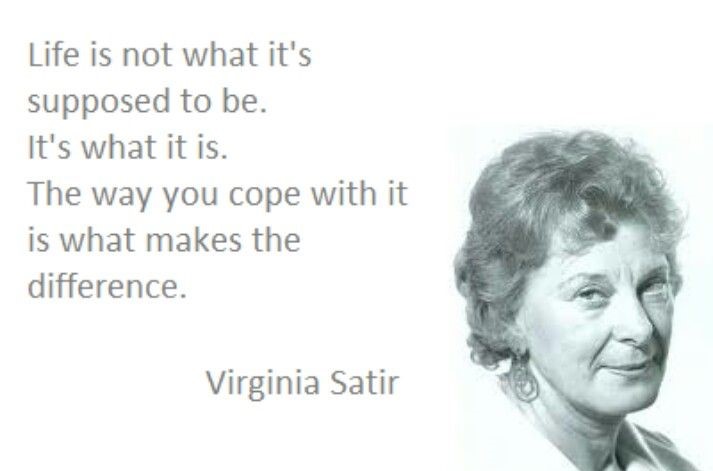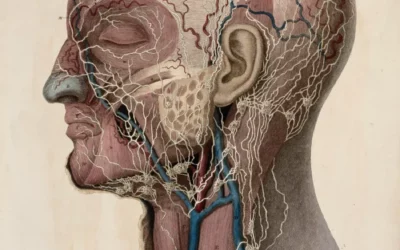
The final chapter of the acclaimed television series “Mad Men” takes place at the Esalen Institute in Big Sur, California. Seeking solace and meaning, the protagonist Don Draper and other characters from the show find themselves at Esalen, a renowned retreat known for personal growth and introspection. Surrounded by the scenic beauty of Big Sur, the characters engage in therapeutic activities and workshops, confronting their inner demons and exploring their identities. The conclusion at Esalen reflects the show’s exploration of themes such as personal transformation, authenticity, and the search for meaning in an ever-changing world.
By choosing to conclude the series at Esalen, “Mad Men” emphasizes the human quest for self-discovery and authenticity. The characters’ experiences at the institute encapsulate the overarching themes of identity, ambition, and societal pressures that defined the show. The Esalen setting invites viewers to reflect on their own lives and the importance of introspection, personal growth, and the pursuit of an authentic existence.
What is Easlen?
 Esalen Institute, commonly referred to as Esalen, is a renowned retreat center and educational institution located in Big Sur, California. Founded in 1962, Esalen became a focal point for the Human Potential Movement and a hub for personal growth, self-exploration, and transformative experiences.
Esalen Institute, commonly referred to as Esalen, is a renowned retreat center and educational institution located in Big Sur, California. Founded in 1962, Esalen became a focal point for the Human Potential Movement and a hub for personal growth, self-exploration, and transformative experiences.
Esalen is nestled in a breathtaking coastal setting, surrounded by rugged cliffs and the majestic beauty of the Pacific Ocean. The location itself contributes to the tranquil and awe-inspiring atmosphere that has attracted countless individuals seeking deeper meaning and personal transformation.
At its core, Esalen embodies a holistic and inclusive approach to human development and well-being. It offers a wide range of workshops, seminars, and immersive experiences that delve into diverse areas of study, including psychology, spirituality, arts, ecology, and somatic practices.
Esalen gained recognition for its pioneering contributions to various fields. It became a hotbed for the exploration of alternative and innovative therapeutic approaches, bringing together luminaries such as Virginia Satir, Fritz Perls, Carl Rogers, and other influential figures who shaped the landscape of humanistic psychology and the therapeutic world.
The institute’s workshops and programs are designed to facilitate personal growth, self-awareness, and self-actualization. Participants engage in activities like meditation, yoga, expressive arts, psychotherapy, and various bodywork modalities. These practices encourage individuals to deepen their understanding of themselves, explore their emotions, and develop new perspectives on life.
Esalen’s unique contribution lies in its emphasis on experiential learning and community. Participants often engage in communal living during their stay, fostering an atmosphere of shared experiences, dialogue, and connection. The institute encourages an open and supportive environment that allows individuals to express their authentic selves, challenge their limiting beliefs, and explore new ways of being.
Esalen has also been a place of cross-cultural exchange, welcoming people from all walks of life, including artists, scholars, spiritual seekers, and individuals seeking personal growth and transformation. The institute has been a catalyst for dialogue and understanding across various cultural, spiritual, and philosophical traditions.
Over the years, Esalen has expanded its offerings to encompass a wide array of topics, including ecology, sustainability, leadership development, and social justice. It continues to evolve, adapting to the changing needs of society and remaining at the forefront of the exploration of human potential.
Who was Virginia Satir?
 Virginia Satir played a pivotal role in the Human Potential Movement, which emerged in the 1960s and 1970s. This movement focused on personal growth, self-actualization, and the realization of human potential. Satir’s approach to therapy and her encounter groups were central to this movement, as she aimed to facilitate transformation and empower individuals to live more fulfilling lives.
Virginia Satir played a pivotal role in the Human Potential Movement, which emerged in the 1960s and 1970s. This movement focused on personal growth, self-actualization, and the realization of human potential. Satir’s approach to therapy and her encounter groups were central to this movement, as she aimed to facilitate transformation and empower individuals to live more fulfilling lives.
Satir’s encounter groups were unique and innovative. They provided a safe and supportive space for individuals to explore their emotions, engage in open and honest communication, and confront their fears and vulnerabilities. These groups fostered a sense of community and encouraged participants to express themselves authentically, free from judgment. The encounter group format allowed individuals to develop deeper self-awareness, gain insight into their relational patterns, and learn new ways of relating to others.
Central to Satir’s larger philosophy was the belief that change and growth were possible for every individual. She emphasized the importance of nurturing healthy relationships and recognized that individuals were shaped by their family systems and societal influences. Satir believed in the power of love, respect, and effective communication to heal emotional wounds and foster personal growth.
Satir’s therapeutic approach was holistic and humanistic. She viewed individuals as complex beings with emotional, physical, and spiritual dimensions. Her therapy sessions incorporated various techniques from different modalities, including psychodrama, gestalt therapy, and family systems therapy. Satir emphasized the importance of empathy, active listening, and creating a non-judgmental and supportive therapeutic environment.
One of the key aspects of Satir’s philosophy was the notion of self-esteem. She recognized the profound impact that self-worth and self-acceptance had on individuals’ overall well-being. Satir worked tirelessly to help individuals develop a positive self-image, cultivate self-compassion, and embrace their inherent worthiness.
Satir’s larger psychology was rooted in the belief that individuals possessed the inner resources necessary for growth and healing. She saw therapy as a collaborative process, where the therapist acted as a facilitator of change rather than an expert with all the answers. Satir’s approach focused on empowering individuals to take responsibility for their lives, make conscious choices, and embrace personal transformation.
Throughout her career, Satir touched the lives of countless individuals through her therapy sessions, workshops, and writings. Her profound influence on the field of family therapy and the Human Potential Movement continues to shape the way we understand personal growth and human relationships. Satir’s philosophy and psychology highlight the importance of connection, self-awareness, and the belief in the innate potential for change and fulfillment within each individual.
Satir’s Encounter Groups
Virginia Satir’s encounter groups were a significant aspect of her therapeutic approach and made a profound impact on the field of psychology and personal growth. These groups were designed to provide individuals with a transformative experience through authentic and open communication, emotional exploration, and deep interpersonal connections.
Encounter groups were a departure from traditional therapy sessions, as they focused on creating a supportive and non-judgmental space for participants to express themselves fully. Satir believed that through this process, individuals could gain insight into their own patterns, emotions, and relationships, leading to personal growth and self-awareness.
In encounter groups, participants were encouraged to share their thoughts, feelings, and experiences openly. This included discussing their fears, insecurities, hopes, and aspirations. Through this level of vulnerability, individuals had the opportunity to be seen and heard by others who were also engaged in their own personal journeys.
The groups often employed various techniques to facilitate deeper exploration and understanding. Role-playing, psychodrama, and expressive arts were used to bring emotions and interpersonal dynamics to the surface. Through these experiential exercises, participants could gain insight into their own behavior, patterns, and the impact they had on others.
The encounter group process also emphasized the importance of feedback and reflection. Participants would offer honest and compassionate feedback to one another, sharing observations about behavior, communication styles, and the impact they had on the group. This feedback was intended to provide individuals with a broader perspective on their own patterns and to foster personal growth and self-awareness.
One of the primary goals of encounter groups was to create a sense of community and belonging. The group setting allowed participants to connect with others who were on similar paths of self-discovery and to develop deep and meaningful relationships. Through sharing experiences and supporting one another, individuals could feel less alone in their struggles and find solace in the understanding and empathy of the group.
Virginia Satir believed that encounter groups had the power to create profound and lasting change in individuals’ lives. By providing a safe and supportive environment, participants could confront their fears, work through unresolved emotions, and develop healthier ways of relating to themselves and others.
The impact of Satir’s encounter groups extended far beyond the individuals who directly participated in them. Her innovative approach influenced the field of therapy, inspiring others to explore the potential of group dynamics and experiential techniques in promoting personal growth and transformation.
Today, encounter groups and similar therapeutic formats continue to be utilized in various contexts, emphasizing the importance of authentic communication, self-exploration, and community support. The legacy of Virginia Satir’s encounter groups stands as a testament to the profound impact that can be achieved through open and genuine connection with others on the journey of personal growth.
What were Virginia Satir’s Techniques
Virginia Satir’s work encompassed a range of key concepts and therapeutic techniques that aimed to facilitate personal growth, enhance communication, and foster healthier relationships. Here are some of her notable concepts and techniques:
- Self-Esteem: Satir emphasized the significance of self-esteem in individuals’ well-being and personal growth. She focused on helping clients develop a positive self-image, enhance self-worth, and cultivate self-acceptance.
- Family Systems: Satir recognized the influence of family dynamics on individual well-being. She emphasized the interconnectedness of family systems and the importance of addressing family patterns and communication styles to promote positive change.
- Communication: Satir’s approach highlighted the power of effective communication. She encouraged open and honest expression of thoughts, feelings, and needs, emphasizing the significance of clear and compassionate communication to foster healthier relationships.
- Congruence and Authenticity: Satir emphasized the importance of being true to oneself and living authentically. She encouraged individuals to explore and express their true emotions and thoughts, promoting congruence between inner experiences and outward behavior.
- Transformational Therapy: Satir’s therapy sessions aimed at facilitating personal transformation. She employed various techniques, including role-playing, psychodrama, and guided imagery, to help clients explore and address deep-seated emotional issues.
- Satir Growth Model: Satir developed a model that focused on personal growth and enhancing family relationships. This model emphasized four core areas: self-esteem, congruence, communication, and family systems. It provided a framework for understanding and promoting healthy individual and familial development.
- Sculpting: Satir employed sculpting as a therapeutic technique to visually represent and explore family dynamics. Through the physical arrangement of family members or significant others, clients could gain insights into relationships, roles, and communication patterns.
- Parts Party: This technique involved clients personifying different aspects of themselves, allowing for dialogue and exploration of conflicting feelings, desires, or beliefs. It facilitated self-understanding and integration of various aspects of one’s identity.
- Metaphors and Symbolic Language: Satir often used metaphors and symbolic language to help clients express complex emotions or experiences that were challenging to articulate directly. This approach encouraged deeper self-reflection and understanding.
- Systemic Constellation Work: Satir incorporated elements of systemic constellation work, a therapeutic technique that involves representing family or relationship dynamics through physical objects or people. This technique helps uncover hidden dynamics and facilitates healing and resolution.
These concepts and techniques reflect Virginia Satir’s holistic and humanistic approach to therapy, highlighting the importance of self-esteem, communication, and family systems in promoting personal growth and fostering healthier relationships.
 Satir’s Lasting Impact on the Profession
Satir’s Lasting Impact on the Profession
Virginia Satir had a lasting impact on the field of therapy, leaving behind a rich legacy that continues to influence practitioners and clients alike. Here are some key aspects of her lasting impact:
Humanistic Approach: Satir’s work emphasized a humanistic approach to therapy, placing importance on the individual’s innate potential for growth, self-actualization, and personal agency. Her emphasis on self-esteem, authenticity, and holistic well-being contributed to the development and popularization of humanistic psychology and person-centered therapy.
Family Therapy: Satir is widely recognized as a pioneer in the field of family therapy. She viewed the family system as a crucial influence on individual development and well-being. Her work highlighted the importance of exploring and addressing family dynamics, communication patterns, and intergenerational issues in therapy. Satir’s systemic perspective laid the foundation for family therapy approaches that followed.
Experiential Techniques: Satir incorporated a range of experiential techniques into her therapeutic approach. Techniques such as role-playing, psychodrama, and sculpting helped individuals explore and express their emotions, gain insights into their relational patterns, and facilitate personal growth. Her innovative use of experiential techniques expanded the therapeutic toolbox and inspired others to explore creative and immersive approaches to therapy.
Communication and Relationships: Satir’s focus on communication patterns and relationships was groundbreaking. She emphasized the importance of clear, compassionate, and authentic communication in fostering healthy connections. Her techniques and teachings promoted effective communication skills, empathy, and active listening, which have become integral components of many therapeutic approaches.
Personal Growth and Transformation: Satir’s work centered on personal growth, self-awareness, and transformation. Her encounter groups and therapeutic techniques aimed to facilitate deep exploration, healing, and empowerment. Satir’s emphasis on the individual’s capacity for change and her belief in their inherent worthiness have had a lasting impact on the field of therapy, inspiring practitioners to foster growth-oriented and transformative experiences for their clients.
Influence on Other Therapeutic Approaches: Satir’s ideas and techniques have influenced numerous therapeutic modalities. Her emphasis on the importance of relationships and communication resonated with the development of family systems therapy, narrative therapy, and solution-focused brief therapy, among others. Her holistic and humanistic perspective continues to shape the way therapists approach their work and conceptualize healing and growth.
Training and Education: Satir’s legacy extends beyond her therapeutic work. She was dedicated to training and educating other professionals, conducting workshops, and offering training programs worldwide. Satir’s teachings and methodologies continue to be disseminated through educational institutions, training centers, and organizations, ensuring her impact on therapy endures.
Overall, Virginia Satir’s lasting impact on therapy is reflected in her humanistic approach, focus on family dynamics, emphasis on communication and relationships, promotion of personal growth, and innovative use of experiential techniques. Her contributions have shaped the field of therapy, inspiring practitioners to cultivate empathy, foster authentic connections, and facilitate transformative experiences for their clients.
Did you enjoy this article? Checkout the podcast here: https://gettherapybirmingham.podbean.com/
Bibliography:
Kripal, J. J. (2007). Esalen: America and the Religion of No Religion. University of Chicago Press.
Krippner, S. (2002). The Esalen Institute: A History of the Search for Transformation. In P. Young-Eisendrath & M. E. Miller (Eds.), The Psychology of Mature Spirituality: Integrity, Wisdom, Transcendence (pp. 11-24). Routledge.
Satir, V. (1964). Conjoint Family Therapy: A Guide to Theory and Technique. Science & Behavior Books.
Satir, V. (1972). Peoplemaking. Science & Behavior Books.
Satir, V. (1983). Conjoint Family Therapy (3rd ed.). Science & Behavior Books.
Satir, V. (1988). The New Peoplemaking. Science & Behavior Books.
Satir, V., Banmen, J., Gerber, J., & Gomori, M. (1991). The Satir Model: Family Therapy and Beyond. Science & Behavior Books.
Yalom, I. D. (2008). Staring at the Sun: Overcoming the Terror of Death. Jossey-Bass.
Further Reading:
Dalton, T. C. (2005). Becoming Carl Rogers. Wipf and Stock Publishers.
Gerber, J. (2017). The Satir Model: Family Therapy and Beyond. Rowman & Littlefield.
Keeney, B. P. (1983). Aesthetics of Change. Guilford Press.
Keeney, B. P. (1990). Improvisational Therapy: A Practical Guide for Creative Clinical Strategies. Guilford Press.
Kirschenbaum, H. (2007). The Life and Work of Carl Rogers. PCCS Books.
Kirschenbaum, H., & Henderson, V. L. (Eds.). (1990). The Carl Rogers Reader. Houghton Mifflin.
Levine, P. A. (2010). In an Unspoken Voice: How the Body Releases Trauma and Restores Goodness. North Atlantic Books.
Simon, G. M. (2011). The Heart of the Matter: A Proposal for Relational-Centered Approach to Psychotherapy. Family Process, 50(3), 310-324.
Teyber, E., & McClure, F. H. (2010). Interpersonal Process in Therapy: An Integrative Model. Brooks/Cole.
Yalom, I. D. (2002). The Gift of Therapy: An Open Letter to a New Generation of Therapists and Their Patients. HarperCollins.


























0 Comments